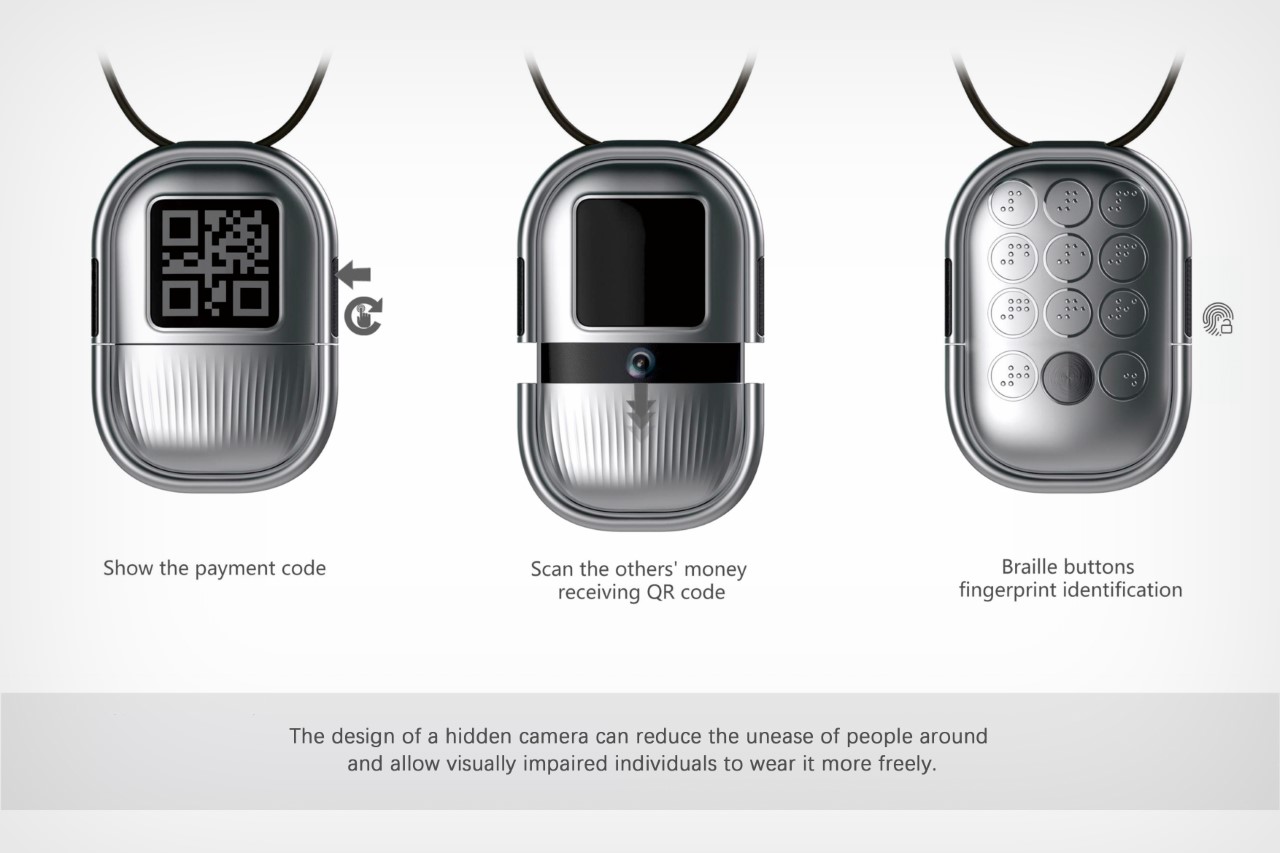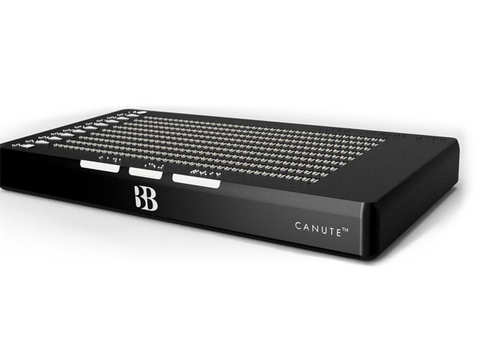Wearable Technology for Low Vision: Making Daily Life Easier
Wearable Technology for Low Vision: Making Daily Life Easier
Blog Article
Discover Cutting-edge Devices Made for the Visually Damaged
The development of ingenious tools for the visually damaged stands for a considerable development in access and independence. Technologies such as wise glasses with AI capacities and mobile applications developed to give auditory summaries are reshaping everyday experiences for customers. Additionally, wearable gadgets that use haptic feedback improve ecological awareness, while contemporary Braille technologies offer new means to involve with text. As these tools proceed to advance, their impact on the lives of those with visual disabilities elevates important concerns regarding the future of inclusivity and freedom in numerous aspects of life. What lies ahead in this technological landscape?
Smart Glasses for Navigation

Smart glasses created for navigation are revolutionizing the means aesthetically impaired people engage with their atmosphere. These advanced tools use a combination of electronic camera innovation, expert system, and acoustic feedback to supply real-time information concerning environments. By using obstacle discovery systems, wise glasses can inform customers to prospective hazards, making it possible for more secure flexibility in both acquainted and unfamiliar settings.
The combination of GPS innovation better boosts navigating capabilities, enabling individuals to get auditory instructions as they move. This hands-free method not only cultivates self-reliance yet additionally equips visually impaired individuals to navigate city landscapes with boosted confidence. In addition, lots of clever glasses are equipped with features that identify landmarks and road signs, supplying contextual details that enhances the customer experience.
Additionally, the development of these tools is consistently advancing, with business functioning to boost the accuracy of item acknowledgment and increase the variety of navigational functions. As clever glasses become much more easily accessible and cost effective, they hold the possible to considerably transform day-to-day live for aesthetically damaged users. Ultimately, these ingenious tools stand for an important action towards inclusivity, offering enhanced mobility and a higher sense of autonomy for individuals navigating the world around them.

Mobile Apps for Daily Living
How can mobile applications improve the every day lives of visually damaged people? Mobile apps are reinventing the way aesthetically damaged individuals browse their atmospheres, manage day-to-day tasks, and accessibility information. These applications give important assistance with numerous capabilities, cultivating independence and enhancing high quality of life.
Numerous ingenious mobile apps are made particularly for daily living. Apps like Be My Eyes link visually impaired customers with sighted volunteers through video clip calls, permitting them to get real-time aid with tasks such as reviewing tags or navigating strange spaces. In A Similar Way, Seeing AI, developed by Microsoft, makes use of expert system to define surroundings, reviewed text, and determine things, effectively changing a smart device into an effective device for daily help.
Additionally, navigation apps customized for the aesthetically damaged, such as Aira and BlindSquare, offer audio-based directions and environmental info, making it possible for users to traverse their surroundings safely and with confidence. Past navigation and prompt assistance, mobile apps likewise support company and job monitoring, with attributes that help users establish suggestions, produce to-do listings, and track appointments. In summary, mobile applications act as crucial sources, equipping aesthetically damaged people to lead even more independent and satisfying lives.
Wearable Technologies for Assistance
Empowerment with modern technology is significantly noticeable in the world of wearable tools designed to assist aesthetically damaged people. These cutting-edge devices incorporate effortlessly right into every day life, enhancing navigation and offering crucial responses to customers. For circumstances, wise glasses furnished with cams can read and acknowledge faces text aloud, allowing users to interact more with confidence in expert and social setups.
An additional noteworthy development is using haptic comments systems in wearable devices. These systems make use of resonances or other responsive signals to communicate information concerning the individual's environment, such as barriers or modifications in surface, enhancing mobility and safety and security. Wearable innovations also consist of wristbands that connect to smart Recommended Site devices, notifying customers to notices through refined resonances, therefore enhancing connectivity without reliance on aesthetic signs.
As these technologies proceed to develop, they are not just improving independence for aesthetically damaged people yet likewise promoting a greater feeling of incorporation in culture. By bridging the gap in between challenges encountered in day-to-day living and the potential for freedom, wearable technologies work as critical tools in the mission for equal rights and empowerment for those with visual disabilities.
Sound Description Devices
Audio description devices play a vital function in boosting accessibility for aesthetically impaired individuals, recommended you read giving them with the capacity to engage with visual media. Mobility aids for visually impaired users. These tools supply narrated descriptions of essential visual elements in movies, television shows, and live efficiencies, ensuring that customers can fully understand the context and emotions shared via visuals
Audio summary can be integrated right into numerous platforms, consisting of streaming solutions, movie theater testings, and live theater. Several prominent streaming solutions currently consist of audio description as an accessibility function, permitting viewers to choose it conveniently. In enhancement to conventional media, specialized apps additionally exist, offering audio summaries for art exhibits, galleries, and other social occasions.
The efficiency of audio description depends upon the skill of the storytellers, that have to share aesthetic information succinctly without detracting from the initial audio. Advancements in this field are additionally paving the method for even more personalized experiences, where customers can change the degree of information and pacing according to their click to investigate preferences.
Braille Innovations and Gadgets
Braille tools and innovations have substantially transformed the method aesthetically impaired individuals engage with text and details. Modern improvements have actually led to the advancement of versatile devices that enhance proficiency and independence among individuals.
Moreover, mobile Braille notetakers integrate traditional Braille input with contemporary functionalities, helping with note-taking, organizing, and paper editing and enhancing on the move. Wearable technology for low vision. These portable gadgets usually feature text-to-speech capabilities, bridging the gap in between Braille and acoustic details
On top of that, cutting-edge Braille printers have actually emerged, allowing customers to generate Braille tags, files, and educational materials successfully. This access promotes higher participation in expert and educational settings, inevitably promoting inclusivity.
Furthermore, study right into smart Braille modern technologies proceeds to expand. Instruments that integrate synthetic intelligence are being discovered to offer real-time navigation help and contextual info, boosting the individual experience in diverse setups. In general, these innovations show a commitment to encouraging visually damaged individuals via innovation, guaranteeing they can quickly access and involve with the world around them.

Conclusion
The advancement of innovative devices for the aesthetically damaged substantially improves self-reliance and high quality of life. These technologies not only foster better inclusion but likewise advertise freedom in daily tasks, inevitably contributing to an extra fair and available society for aesthetically impaired people.
As wise glasses become a lot more affordable and obtainable, they hold the potential to significantly change day-to-day life for visually impaired users. Mobile applications are reinventing the way aesthetically damaged users browse their atmospheres, manage day-to-day tasks, and access info. Apps like Be My Eyes attach visually damaged individuals with sighted volunteers via video clip calls, permitting them to get real-time assistance with jobs such as reading tags or navigating strange spaces.In addition, navigation applications tailored for the aesthetically impaired, such as Aira and BlindSquare, offer audio-based instructions and environmental info, enabling individuals to traverse their surroundings safely and with confidence.The development of cutting-edge tools for the aesthetically impaired substantially enhances self-reliance and top quality of life.
Report this page